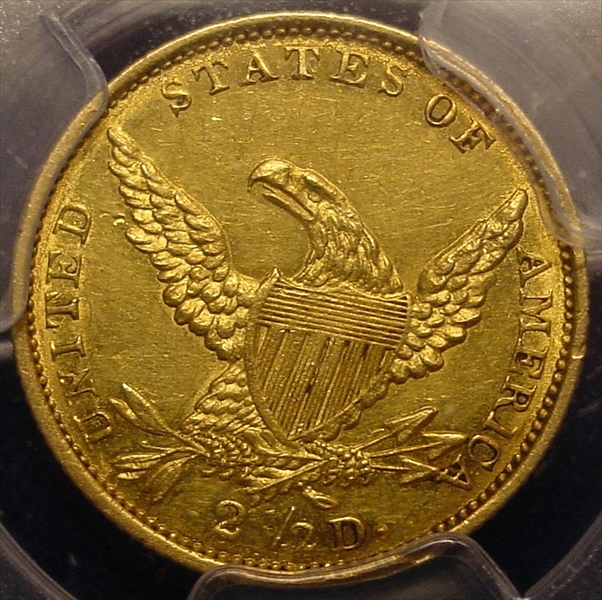1834 $2.50 Classic MS60 认证号81122043, PCGS号7692
拥有者评论
专家评论
Ron Guth
In 1834, Mint officials changed the design on the Quarter Eagles to comply with the new Coinage Act of June 28, 1834, which law reduced the weight of the Quarter Eagles to prevent melting. On the obverse, Liberty no longer wore a cap; rather the design was a copy of that seen on Classic Head Half Cents of 1809-1836 and Large Cents of 1808-1814.
1834 Quarter Eagles are found with two, slightly different obverse designs. The first, called "Small Head" by Water Breen and others, has tight curls that appear in a near-horizontal arrangement at the back of Liberty's head. The second, called "Large Head" or "Booby Head" by Breen, has looser curls with deep indents between the curls. Breen claimed six different reverse varieties of the Large Head alone, but subsequent researchers have identified only four different reverse dies for both types combined (either Breen was mistaken or there are some varieties awaiting re-discovery) and only four different die combinations in total.
Numerous Mint State 1834 Classic Head Quarter Eagles exist, but most are MS61 to MS64. Gems are very rare, and the finest example appears to be a single PCGS MS66.
David Akers (1975/88)
There are actually two distinct vareties of 1834 No Motto quarter eagles. The first has a small head and can be distinguished from the large head variety by the fact that it has tight curls at the top of the head and at the back of the head. In particular, the curls at the back of the head form a nearly straight vertical line. On the other hand, the curls on the large head variety are much more pronounced, and there is a distinct break in the curls at the back of the head.As a date, this is one of the two most common of this type (the 1836 is the other), and a fairly sizable number of choice examples exist, many of them fully proof-like.
稀有性和存量估计 了解更多
| 所有评级 | 1750 |
| 60或以上 | 250 |
| 65或以上 | 15 |
| 所有评级 | R-4.7 |
| 60或以上 | R-6.6 |
| 65或以上 | R-9.3 |
| 所有评级 | 11 / 11 |
| 60或以上 | 11 / 11 |
| 65或以上 | 6 / 11 |
| 所有评级 | 11 / 11 |
| 60或以上 | 11 / 11 |
| 65或以上 | 6 / 11 |

























